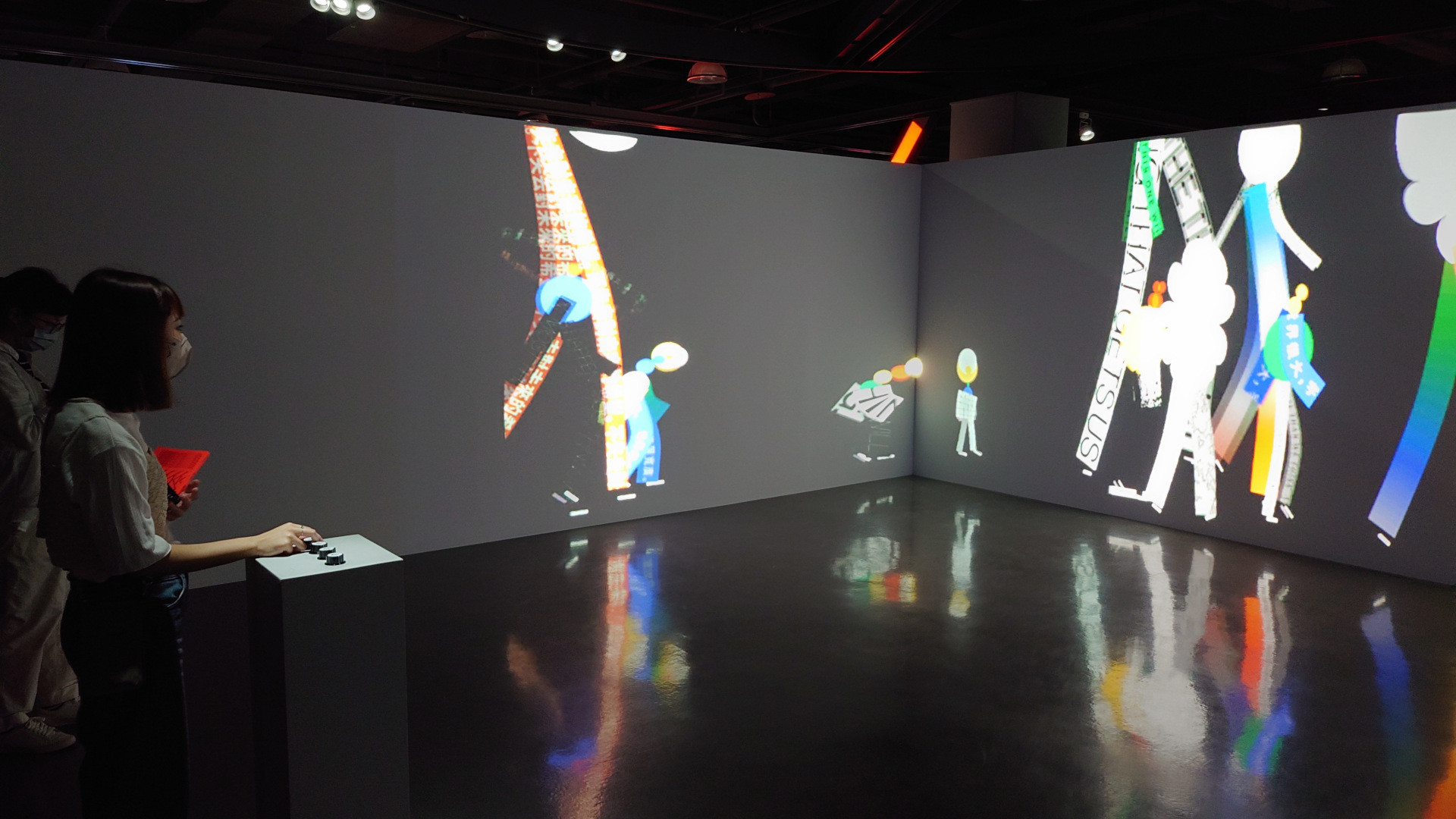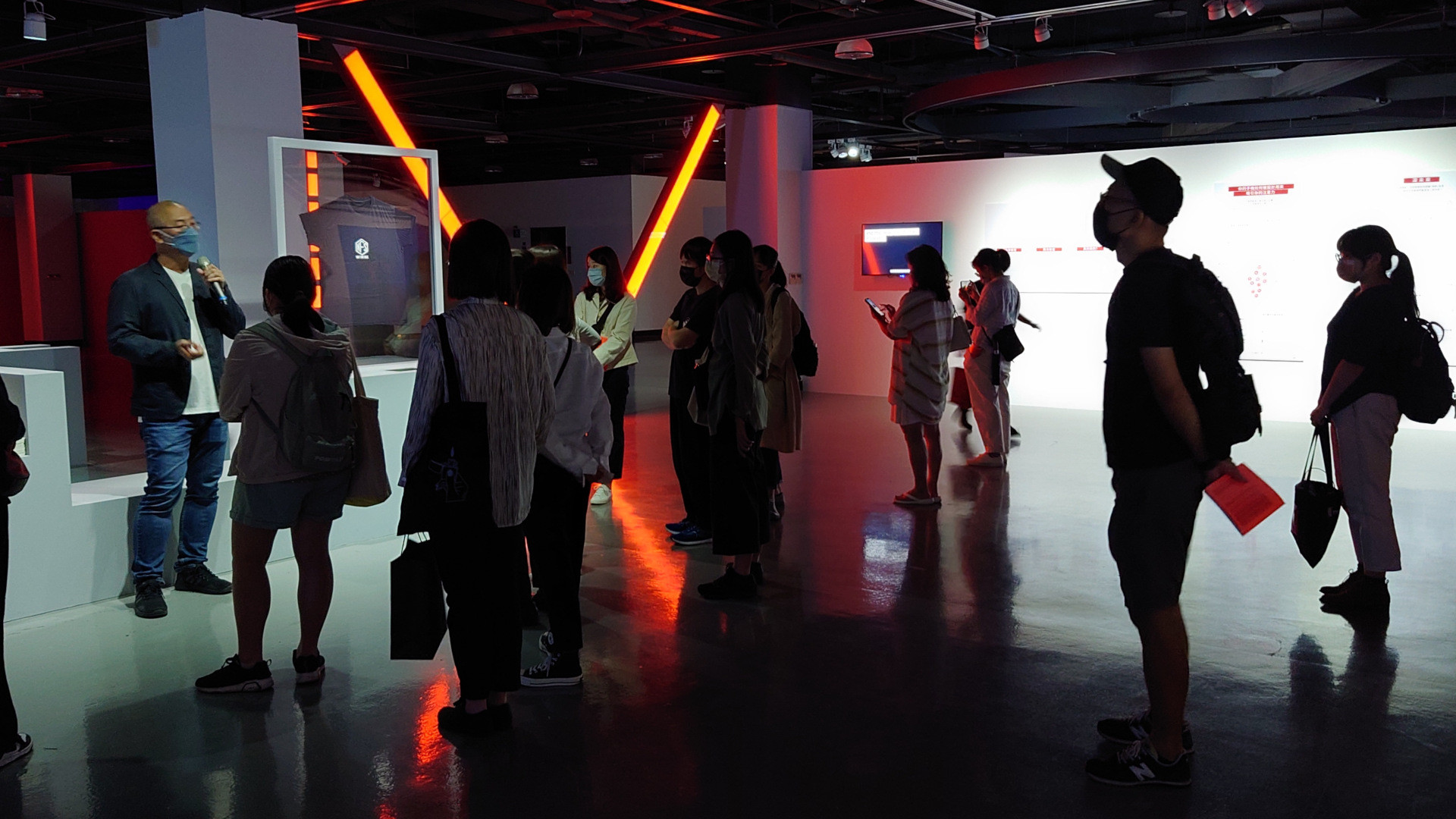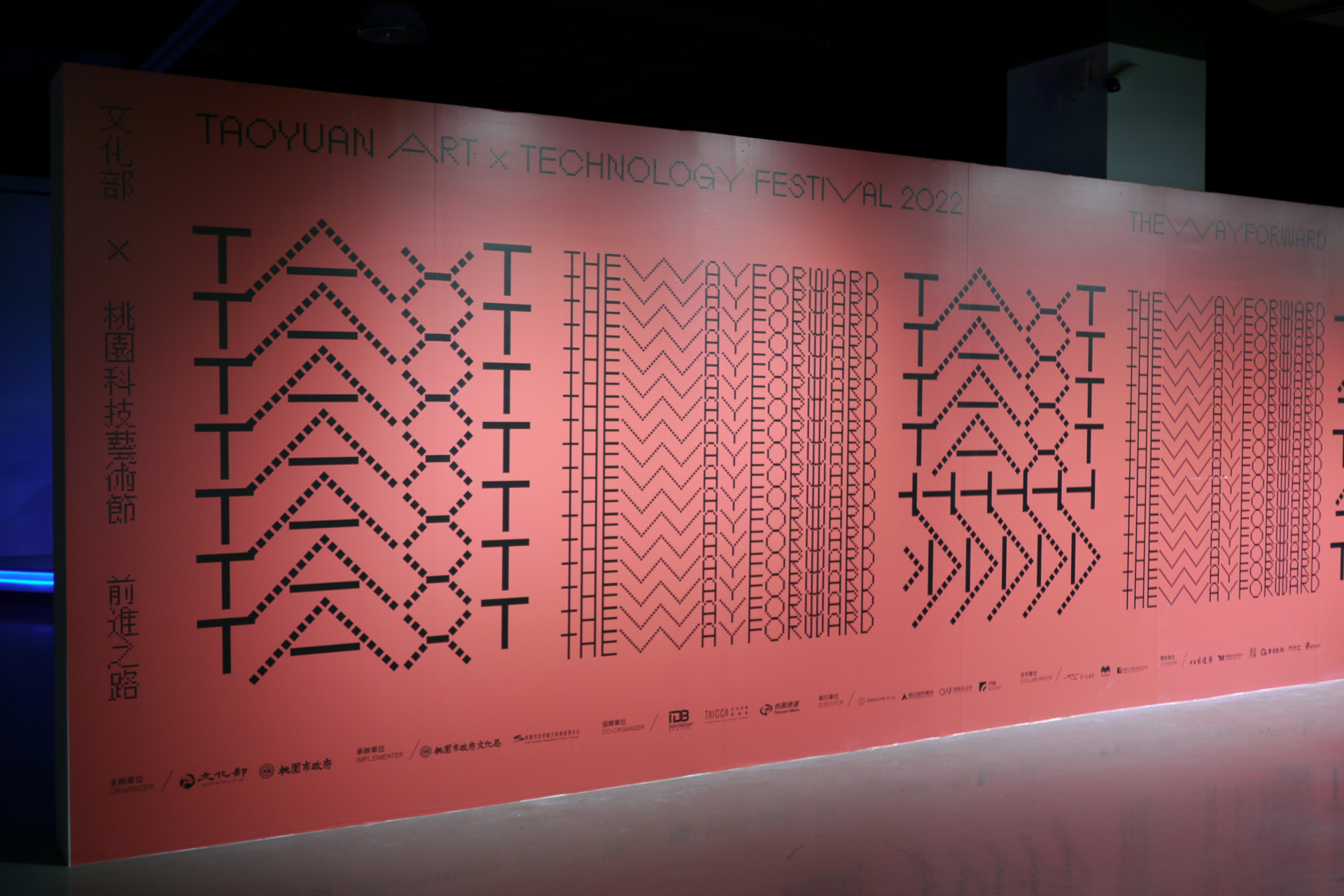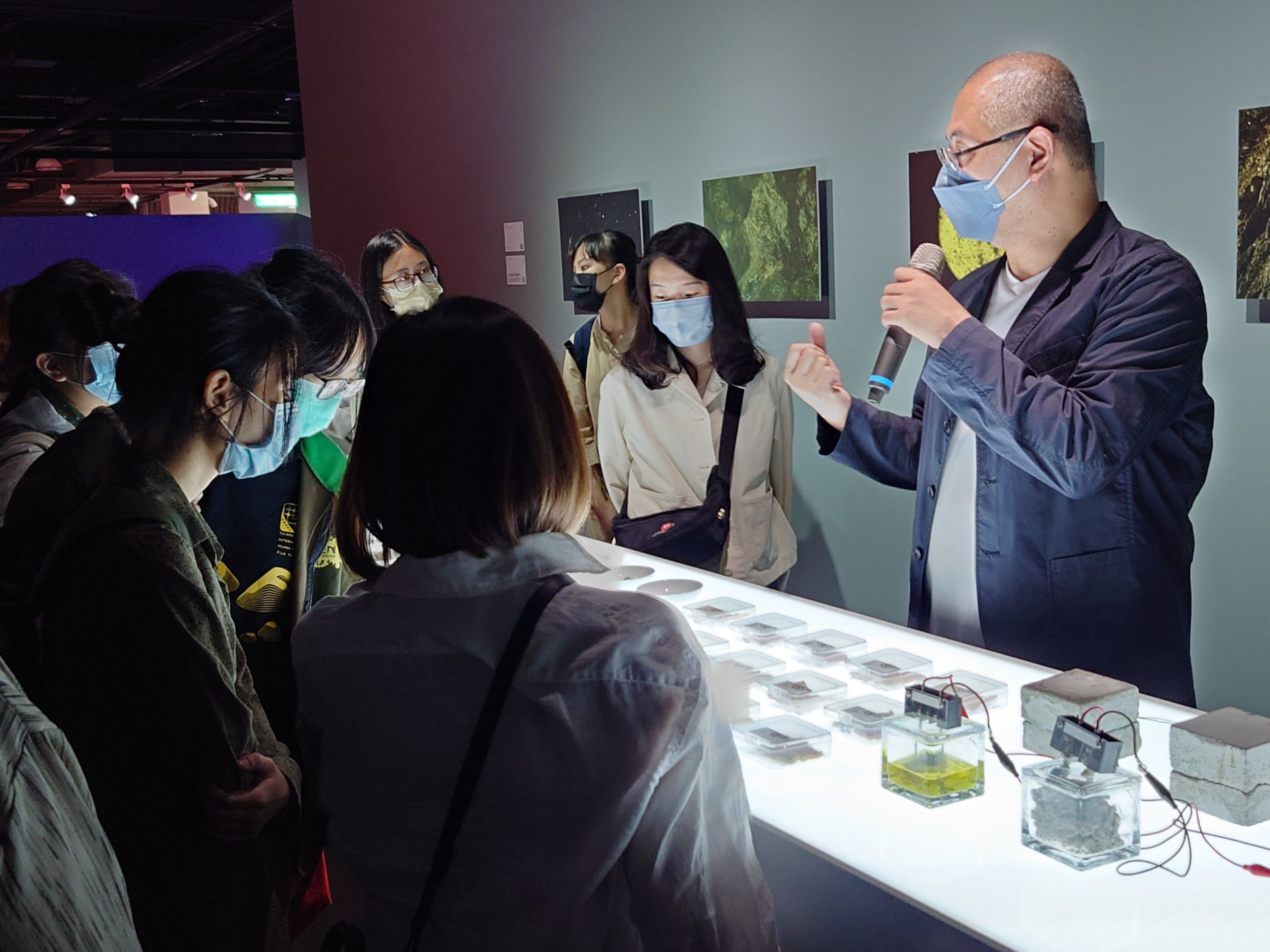by Tyng-Ruey Chuang
語言:
English
Photo Credit: Tyng-Ruey Chuang
THE MONTH-LONG extravaganza of the Taoyuan Art x Technology Festival (TAxT) is being held until October 9th (Sunday) at the Taoyuan Arts Center in northern Taiwan. The Festival includes a large numbers of art installations and workshops, as well as a dozen commissioned theatrical performances at the Arts Center. A temporary audiovisual space, modeled after the dome at the Taiwan Contemporary Culture Lab (C-LAB) in Taipei, has been set up at the Arts Center plaza to showcase immersive video works; more than 80 shows have been scheduled during the Festival period.
One Saturday afternoon I joined a group of about 25 people in a tour given by Escher Tsai (蔡宏賢), the curator of TAxT, of the art works at the festival premise. Tsai first commented that Taipei probably would be the first to cross people’s mind when thinking about the art+tech scenes in Taiwan. That is certainly true as so many exhibitions and shows are happening in the capital’s museums and arts venues. Not to mention the mix of jobs, opportunities, and communities presented by the city itself. But Taoyuan has many to offer too. It has the largest industrial cluster in Taiwan, ranging from electronics to machinery, and to the pharmaceutical and food industry. The Taipei International Airport is actually in Taoyuan; the airport readily connects Taiwan to the world.

Escher Tsai, TAxT curator, gave a guided tour. Photo credit: Tyng-Ruey Chuang

DJOK Station by Marlon Caraig Mendoza. Photo credit: Tyng-Ruey Chuang.
Experimental tofu making by Oyama Ryu. Photo credit: Tyng-Ruey Chuang
Escher Tsai started the tour by introducing “DJOK Station”, a blink-blink styled e-bike with a mounted DJ turntable for karaoke, conceived by Marlon Caraig Mendoza, who is from the Philippines, and Dimension Plus, a tech arts production house in Taiwan. In DJOK Station, tools and pieces are weaved into a playful vehicle accessible and attractive to both the migrant and the local. Many migrant workers in Taiwan rely on e-bikes for personal transport as no driver licenses are required. This context, I think, is not lost to the people in the tour. Tsai moved on to other Taoyuan linkage in the exhibition. Working with Ta Fang Foods (大房豆干), a company in Taoyuan well known for its hard bean curd, the Japanese artist and cook Oyama Ryu (大山 龍) experiments with several lines of “Fossil Tofu” or “Rock Tofu” using extracts from minerals. Likewise, in “Artificial Reality” by Keith Lam (林欣傑), the synchronized robotic arms employed in the work all come from Techman Robot Inc. (達明機器人), a company in Taoyuan.
Several novel video works are installed at the TAxT venue. Among them are “Daydream” (v. 6) by NONOTAK Studio and “Space Type Generator” by Kiel D. Mutschelknaus. These works are notable for their visual precision and generative nature. They can be experienced and enjoyed by kids and adults alike. Other works in TAxT, however, are more conceptual. They are about ideas and need articulations. Their deliberations are in text and print. Distributed at TAxT, for example, are nicely printed and assembled articles on the Commons and NFTs. This series of critics can also be read online in English, French, and Traditional Chinese. The Traditional Chinese translations are prepared especially for TAxT. Working with Tactical Tech—an international NGO focusing on the impacts of technology on citizens and the civil society—a localized edition of “The Glass Room” is displayed at the venue. An emphasis of TAxT, I can feel, is squarely on international connection and collaboration.

Daydream (v. 6) by NONOTAK Studio. Photo credit: Tyng-Ruey Chuang

Space Type Generator by Kiel D. Mutschelknaus. Photo source: Tyng-Ruey Chuang

Escher Tsai briefed the visitors on NFTs. Photo source: Tyng-Ruey Chuang
Of course TAxT draws works from Taiwan too. A section of the exhibition is dedicated to creative works supported by a grant program on arts and technology from the Ministry of Culture. The program is administrated by Dimension Plus with which the TAxT curator Escher Tsai is affiliated. These works are more experimental. In the bio-physical-terrestrial lenses of the artists, they all offer speculative outlooks to the (near) future. As the theme of the 2022 grant program is “Apocalypse Eve”, this probably is no coincidence. Another section of TAxT showcases works created in collaboration with Taiwan’s Industrial Technology Research Institute.
Judged by the diversity of works curated and arranged by TAxT, one hour in the afternoon at the Taoyuan Arts Center simply is not sufficient for a full experience of the arts presented there. Neither have I attended any of the workshops, panels, and performances organized by TAxT. I cannot help but feel I have missed out something interesting. One consolation, for me, will be to make up the loss by viewing the TAxT YouTube channel in my spare time.




